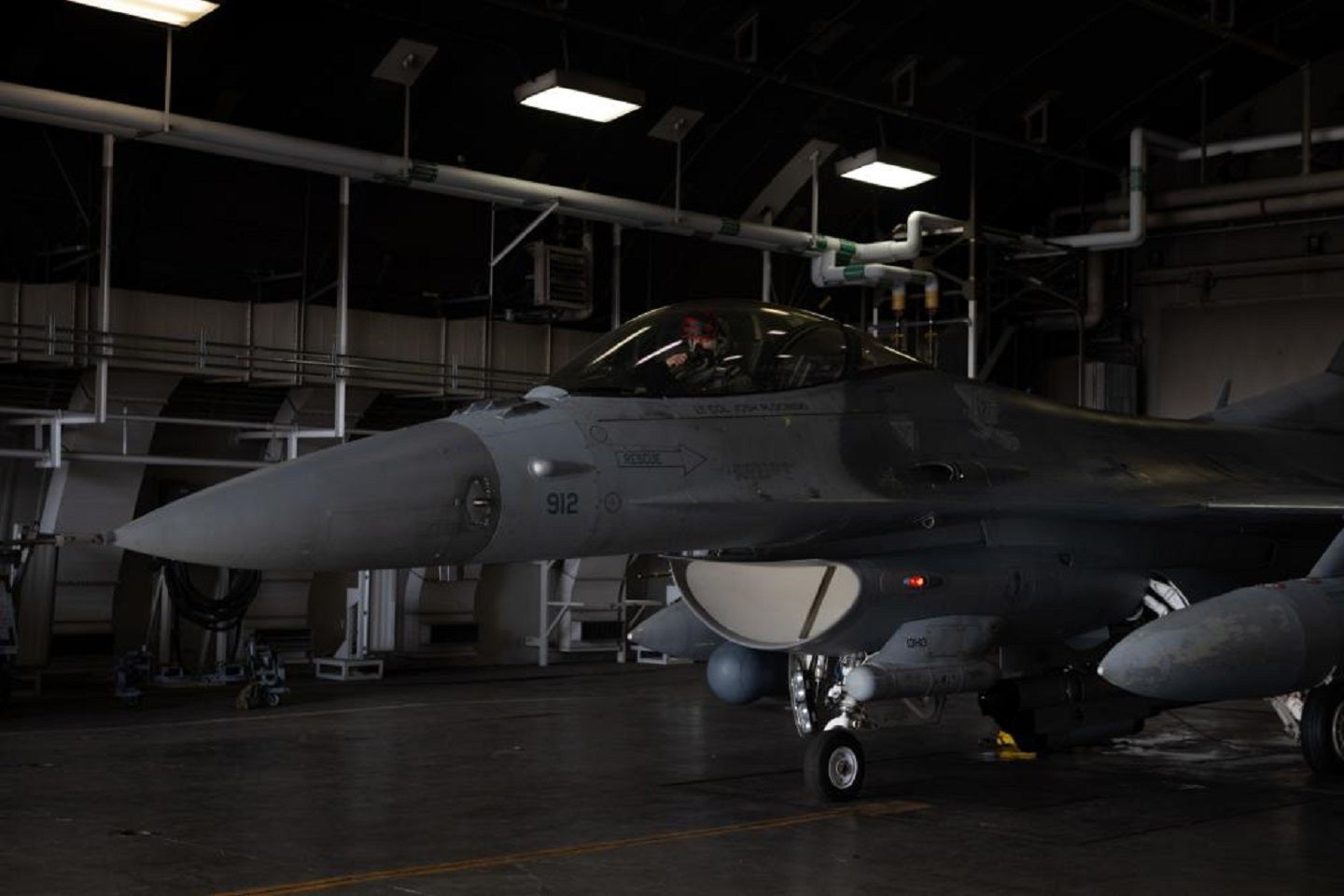
Combat aircraft capabilities need to be wide-ranging in modern information-intensive battlespaces. So, the F-16 must adapt to fifth generation requirements or die as a legacy platform.
Promulgating the former option, Lockheed Martin have implemented its Post-Block Integration Team (PoBIT) programme that will integrate more advanced modular systems for fifth-generation performance capabilities. The manufacturer is confident its upgrades will enable F-16 fleets to operate well into the 2060s.
Part of the programme requires an adept radar system. The US Department of Defense (DoD) has therefore awarded Northrop Grumman with a modified contract, with a value of $128m, to provide active electronically scanned array (AESA) radars for the US Air Force’s (USAF) F-16 fleet.
The modification is for the exercise of options to include 48 radars, four initial spare kits, and two readiness spares kits. Work will be performed in Linthicum Heights, Maryland, and is expected to be completed 30 May, 2031. The total cumulative face value of the contract has reached $1,481,312,105.
“There are likely a number of factors underpinning the F-16 upgrade drive,” GlobalData defence analyst Harry Boneham stated. “Factors may include timeliness, with the PoBIT programme allowing for near-fifth generation capabilities to be delivered in volume on a relatively short timeframe.”
AESA radar
“In comparison to mechanically scanned arrays, AESA radars would represent a significant step forward on terms of capability,” Boneham added. “Broadly speaking, AESA radars can provide more granular and reliable target data at greater range and more quickly. They are also capable of tracking more targets, including small targets.

US Tariffs are shifting - will you react or anticipate?
Don’t let policy changes catch you off guard. Stay proactive with real-time data and expert analysis.
By GlobalDataIn addition, Boneham said that due to the absence of a manual scanning mechanism, AESA radars are lighter and more reliable, requiring fewer maintenance hours.
“Northrop Grumman’s SABR AN/APG-83 also carries a synthetic aperture mapping mode which enables it to produce high-resolution ground images. These images can be used for targeting and ISR purposes,” he added.
F-16 upgrade strategy
“Following the conclusion of this programme, the aircraft will have a range of upgrades which will improve lethality and ensure that the F-16 remains capable of countering current and emerging threats,” Boneham remarked.
Bahrain, Jordan, and Bulgaria are some of the first of many countries across the world that have signed letters of offer and acceptance for the upgraded F-16s.
The newly integrated fifth-generation systems in the fourth-generation combat aircraft will remain a popular platform to procure as Lockheed continue to narrow the military fixed wing aircraft market as the prime leads in the latest innovative capabilities with its F-35 Lightning IIs, while also providing a more cost-effective alternative in its F-16 Block 70/72s, while maintaining fifth generation integrity.



